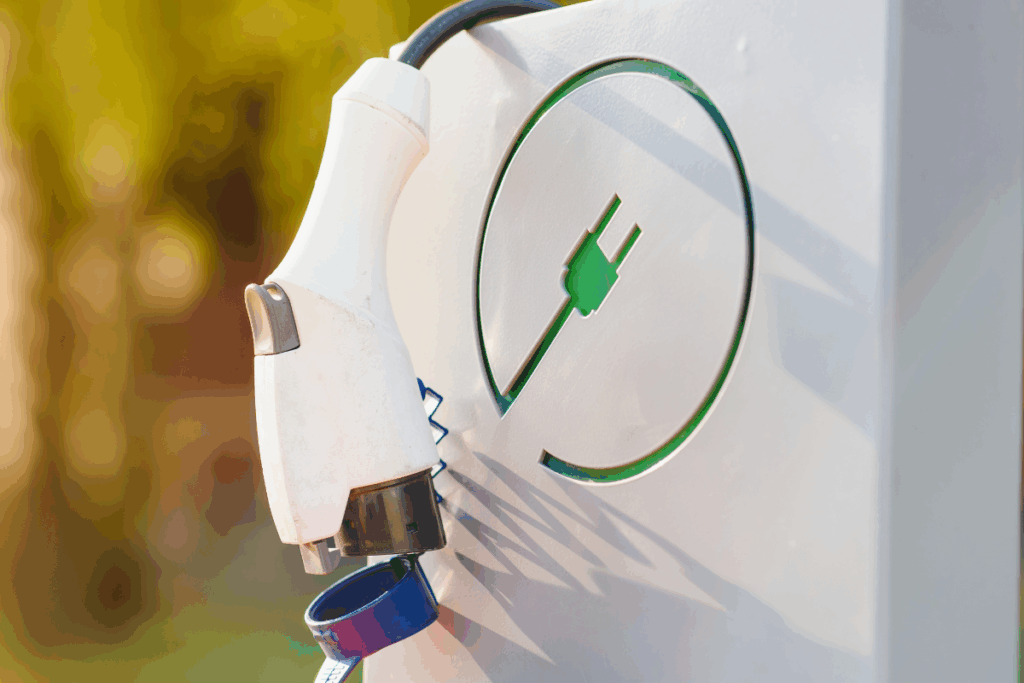With electric vehicles continuing to increase their automotive market share year over year since 2021, automotive component manufacturers have needed to upgrade their production lines with technology that supports the precision machining of EV components.
BEV battery enclosures are one such component that’s critical to the safe, reliable operation of EVs. In this month’s blog, we take an in-depth look at the special considerations manufacturers take when designing and fabricating this unique equipment.
What Is The Role Of A BEV Battery Enclosure?
As the name suggests, a BEV battery enclosure is the structural housing that protects the vehicle’s delicate battery cells and modules from external factors such as debris, moisture, and impacts. It also helps manage temperature and structural support for the entire battery pack and vehicle systems, contributing to the optimal performance and lifespan of the battery
It contains cooling lines that regulate battery temperature, blast vents to safely release pressure if a battery experiences thermal runaway, and electrical components such as main battery fuses, contacts, and connectors.
Battery enclosures also play a key role in EV operational safety, protecting the battery from fires, leaks, and other threats, and shielding the vehicle’s sensitive electrical systems from electromagnetic interference.
Read More: Our Capabilities
Special Design And Fabrication Considerations For Battery Enclosures
The crucial role that battery boxes play in the safe and efficient operation of EVs means they must be built with meticulous attention to several factors, including:
Material Selection For Structural Integrity And Safety
BEV battery enclosures must simultaneously deliver strength, crash protection, thermal insulation and weight savings. They also need to be made with corrosion-resistant materials that resist the effects of exposure to road salts, humidity, and extreme temperature swings.
Aluminum alloys are a standard material used in these components because they combine low weight with high strength-to-weight ratios and optimal corrosion resistance. However, steel, advanced composites, and hybrid-material designs are gaining traction for applications where added rigidity, electromagnetic shielding, or cost control are required.
Design Considerations For Safe Performance
Engineers must account for safety measures such as leak containment, battery cooling, and secure cell placement during the design phase of the project. Different safety standards can vary between applications, but they all must be considered to enhance the safe use of the vehicle.
For example, the enclosure must be engineered to withstand potential battery fires or explosions, protecting the vehicle occupants as well as people and property outside the vehicle. Engineers must also design lifting points so they can handle the intended load, and ensure that adequate guarding is in place to prevent shocks and short circuiting.
Wiring Design To Deliver Reliable Connectivity
Meticulous attention to battery and wiring configuration is crucial in multi-cell battery enclosures to ensure application performance, safety, and efficiency.
Engineers must not only configure the enclosure for serial or parallel connections, depending on the individual needs of the project, but they must also install adequate shielding for bus-bar connections or wires and ensure the positive and negative connections are correctly arranged.
Contamination Control During Fabrication
Trace contaminants, such as metal shavings, machining fluid residue, or particulates, can impact the performance of a BEV battery system. A single conductive particle inside the enclosure can create short circuits, interfere with sensor operation, or negatively impact overall performance.
Effective cleaning protocols must be integrated directly into the machining workflow. High-pressure wash systems, particle monitoring, and solvent cleaning stations ensure the battery enclosure components leave the production line free of contaminants.
Surface Finishing And Sealing Performance
Microscopic surface roughness can undermine gasket performance, create stress concentrations, or initiate cracks under vibration. Battery enclosures must also form a hermetic seal to prevent water, dust, and debris from compromising the battery pack.
A controlled surface finish ensures not only sealing effectiveness but also long-term resistance to fretting, corrosion, and fatigue. Automated finishing processes that are validated with surface roughness measurements allow fabricators to deliver consistent sealing surfaces without slowing production cycles.
Advanced Coatings That Enhance Longevity And Durability
Thermal runaway mitigation, fire resistance, corrosion prevention, and waterproofing are concerns that can be addressed using advanced coatings that ensure the long-term safety, efficiency, and reliability of the battery system.
Innovative ceramic-based, silicone-based, or polyurethane composite coatings offer improved manufacturing efficiency through automated application. They’re also designed to improve thermal management, resist corrosion, and support the use of lighter materials such as aluminum.
Read More: How Kenona Solves EV Manufacturing Challenges
Partner With Kenona Industries For Top-Quality Precision Machine EV Solutions
The engineering experts at Kenona Industries, a division of Arrow Automotive, we supply Tier 1 OEM direct battery trays, crossmembers, battery brackets, extrusions, and more to support high volume EV production.
As a leading automotive components supplier, we employ innovative processes to ensure we achieve the tightest tolerances possible, validate all parts with in-process gauging and scanning, and conduct multiple tests to ensure you get the best results for your precision machine projects every time.
Get in touch with our team when you’re ready to build!
Contact Kenona Industries For A Quote On Your Next Design And Fabrication Project
Kenona Industries is a world-class supplier of automotive components to leading OEMs and Tier 1, 2, and 3 manufacturers. Discover what sets us apart by requesting a quote for your next project today!
